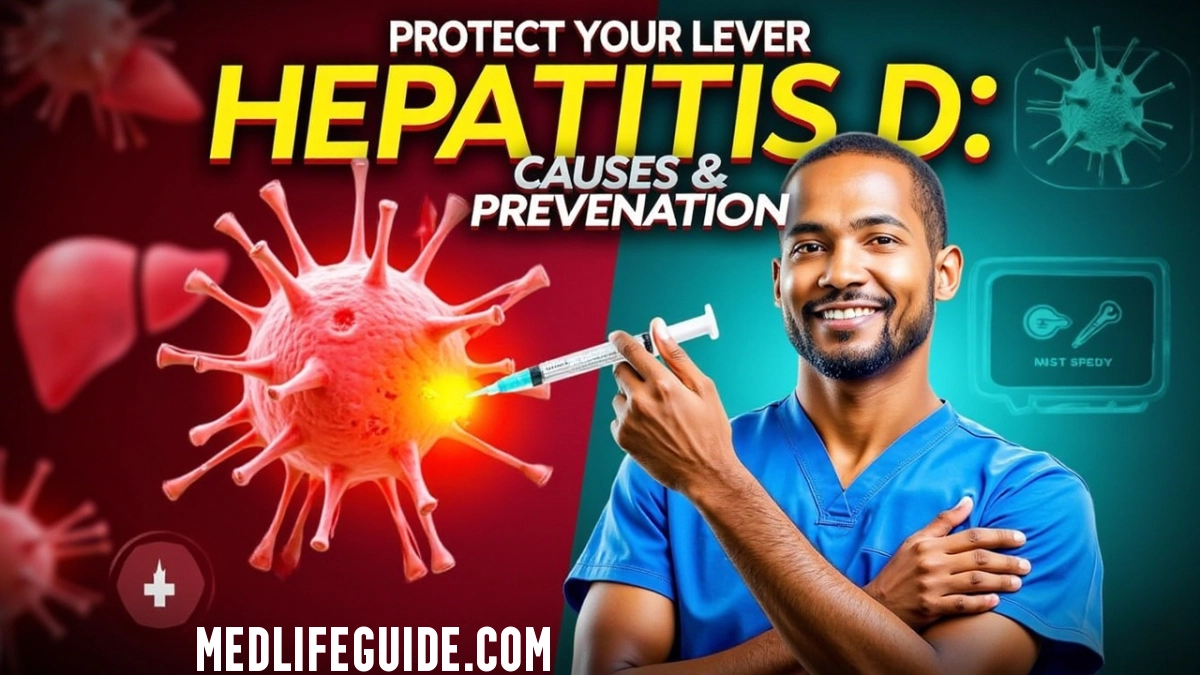Hepatitis D (HDV) is a rare but severe form of viral hepatitis that only affects people already infected with hepatitis B (HBV). Often called a “satellite virus,” HDV piggybacks on HBV to replicate, leading to faster liver damage, cirrhosis, or even liver failure.
Despite its severity, many people remain unaware of hepatitis D’s risks. In this guide, we’ll break down:
- How hepatitis D spreads (and who’s most at risk)
- Key symptoms to watch for
- Proven prevention strategies
- Latest medical insights on treatment options
Let’s dive in.
What Causes Hepatitis D?
Hepatitis D is caused by the hepatitis D virus (HDV), but unlike other hepatitis strains, it cannot infect someone on its own. It requires the presence of hepatitis B to multiply.
Primary Transmission Routes
- Blood-to-Blood Contact – The most common cause, including:
- Sharing needles (IV drug use)
- Unsafe medical procedures (in regions with poor sterilization)
- Blood transfusions (rare in screened blood supplies)
- Sexual Transmission – Less common than HBV but possible, especially with unprotected sex or multiple partners.
- Mother-to-Child – Rare, but HBV-positive mothers can pass HDV during childbirth.
Key Insight: Unlike hepatitis A or E, HDV is not spread through food or water.
Who Is at Highest Risk?
While anyone with HBV can contract HDV, these groups face elevated risks:
- People who inject drugs (highest transmission rates)
- Individuals with multiple sexual partners
- Healthcare workers exposed to blood
- Those living in high-prevalence regions (Mediterranean, Africa, parts of Asia)
Did You Know? About 5% of HBV carriers worldwide also have HDV—but in some regions, co-infection rates exceed 20%.
Symptoms: How to Recognize Hepatitis D
HDV symptoms often mimic HBV but tend to be more severe and rapid. Look for:
- Fatigue & nausea
- Jaundice (yellowing skin/eyes)
- Dark urine & pale stools
- Abdominal pain (especially near the liver)
In acute cases, symptoms appear suddenly and may resolve. However, chronic HDV (long-term infection) dramatically increases cirrhosis and liver cancer risks.
for the proper detail of the symptoms of hepatitis D click on link Hepatitis D Symptoms: Recognizing the Silent Threat to Your Liver
Prevention: How to Protect Yourself
Since HDV depends on HBV, preventing hepatitis B is the first line of defense.
1. Get Vaccinated Against Hepatitis B
- The HBV vaccine (3-dose series) also blocks HDV.
- Ideal for: Newborns, healthcare workers, travelers to high-risk areas.
2. Practice Safe Needle & Blood Hygiene
- Never share needles, razors, or dental tools.
- Ensure medical/tattoo facilities use sterilized equipment.
3. Use Protection During Sex
- Condoms reduce HBV/HDV transmission risks.
4. Regular Screening (If High-Risk)
- HBV carriers should test for HDV to catch co-infections early.
Treatment: Is Hepatitis D Curable?
Currently, no cure exists for HDV, but treatments can slow liver damage:
- Pegylated interferon-alpha (may suppress the virus)
- Liver transplant (in severe cirrhosis cases)
- Experimental drugs (e.g., bulevirtide, under study)
Pro Tip: Avoiding alcohol and maintaining liver health helps manage symptoms.
Key Takeaways
- HDV requires HBV to infect someone.
- Prevention focuses on avoiding HBV (vaccination + safe practices).
- Chronic HDV accelerates liver damage—early detection is critical.
Final Thoughts
Hepatitis D is a serious but preventable threat. By understanding its causes and taking proactive steps—like HBV vaccination and safe needle practices—you can significantly reduce your risk.

